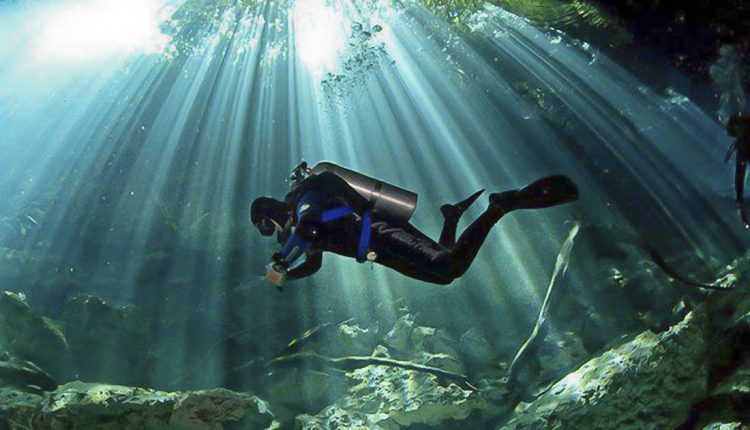
Diving in the Riviera Maya and Playa del Carmen
The Rivera Maya: Boasting the world’s second largest barrier reef in the world, The Great Maya Reef, second only to Australia’s Great Barrier Reef, makes the Rivera Maya a world wide destination for divers, and underwater adventurers. The Great Maya Reef stretches from Cabo Catoche, about 53 kilometers (33 miles) north of Cancun, to the Bay Islands of Honduras, 455 kilometers (285 miles) south of Playa del Carmen, and offers a myriad of dive sights, ranging in depth and difficulty.
This remarkable coral reef, also known as the Mesoamerican reef, which skirts the coasts of Belize, Guatemala on down to Honduras is home to multiple types of amazing corals, magnificent sea turtles and over 500 species of fish and other sea life. The part of the reef that stretches along the Mexican coastline is 300 kilometers (186 miles) long, and, in many parts, the reef is extremely deep with some marked dive sites reaching more then 30 meters or just under 100 feet. There are even dire sights that can be explored, but these sites require more training and experience.
There are more than 70 named dive sites between Punta Maroma and Tulum right along the Rivera Maya. The majority of the marked dive sites located on the Rivera Maya are only a short boat ride away from such resort areas as Playa del Carmen, Puerto Aventuras, Akumal and Tulum. Some of the more popular dive spots are Cerebros, Los Arcos, Pared Verde (Green Wall), Moc Che Deep, Moc Che, Chum Zumbal, Jardines, Sabatos, Tortugas, Barracuda, and Mama Vina.
Not only are there amazing coral, plant, and fish life in the warm waters of the Caribbean, but the underground caves and river system brings a whole other element to diving and exploration. With over 200 miles of underground caves and rivers the Riviera Maya has become a top destination, not only for open water ocean dives, but for cavern and cave diving as well. There are no rivers, or fresh water sources, that run above ground in the Riviera Maya so the cenotes, or sink holes, were the only way the Mayans got their fresh water. Because of this they were considered sacred to the ancient Maya, and still play a significant role in modern life and celebrations.
Divers and explorers can now enter this underwater world through the cenotes, which can be located right on the shores of the Caribbean, or deeper into the jungle flora. The Rivera Maya has more then 75 known cave systems which have been mapped and surveyed and they cover approximately 611 kilometers / 380 miles. Even with that impressive number it is estimated that there is as much as 50% or more that has yet to be explored and documented. Discovered just a little over twenty years ago, the underground river system has very little current, temperate waters (25 degrees Celsius / 78 degrees Fahrenheit), and the water is so clear that visibility is virtually unlimited. Add this to the fact that all you need is an open water certification to experience the exhilaration of cave diving, and it has become a major attraction to the Rivera Maya for divers from all parts of the globe.
Blake C. Hendrickson